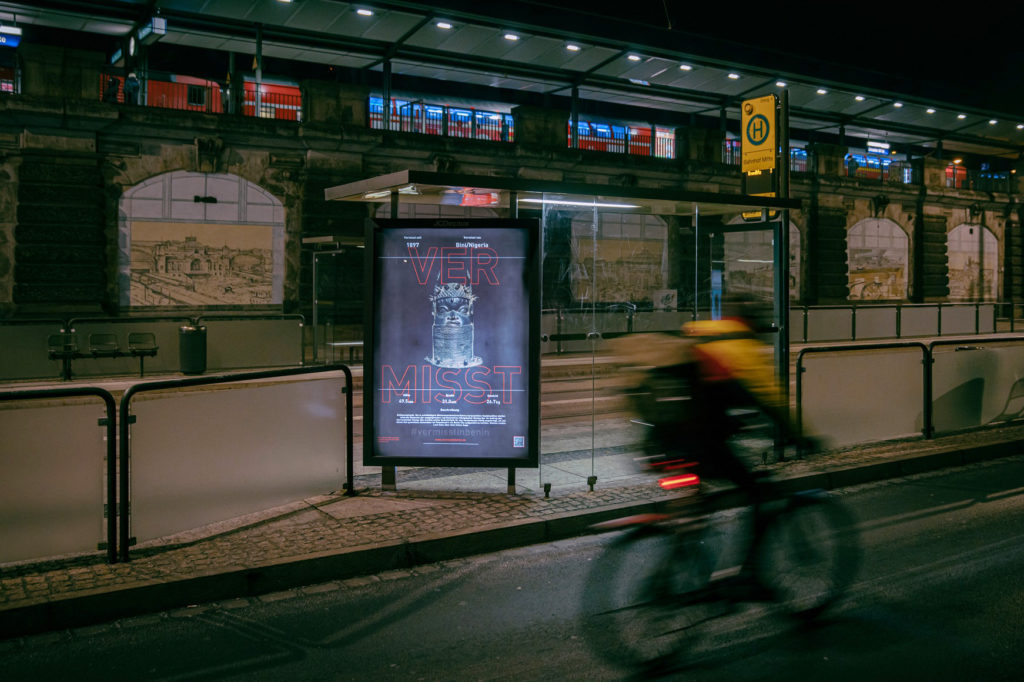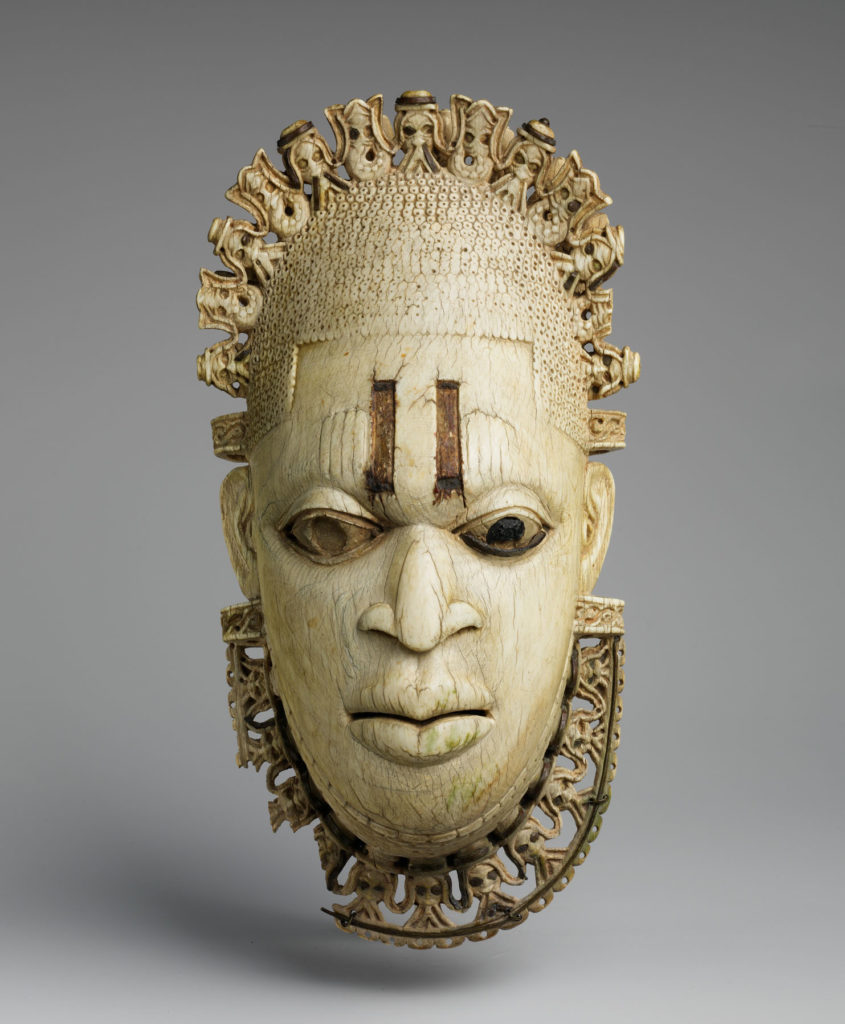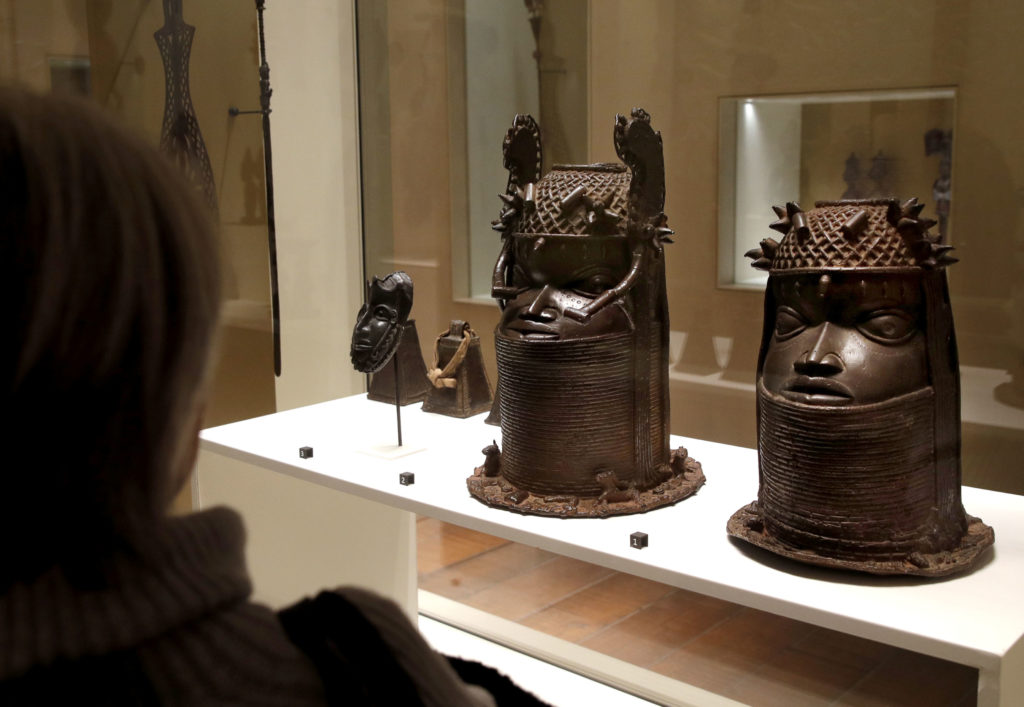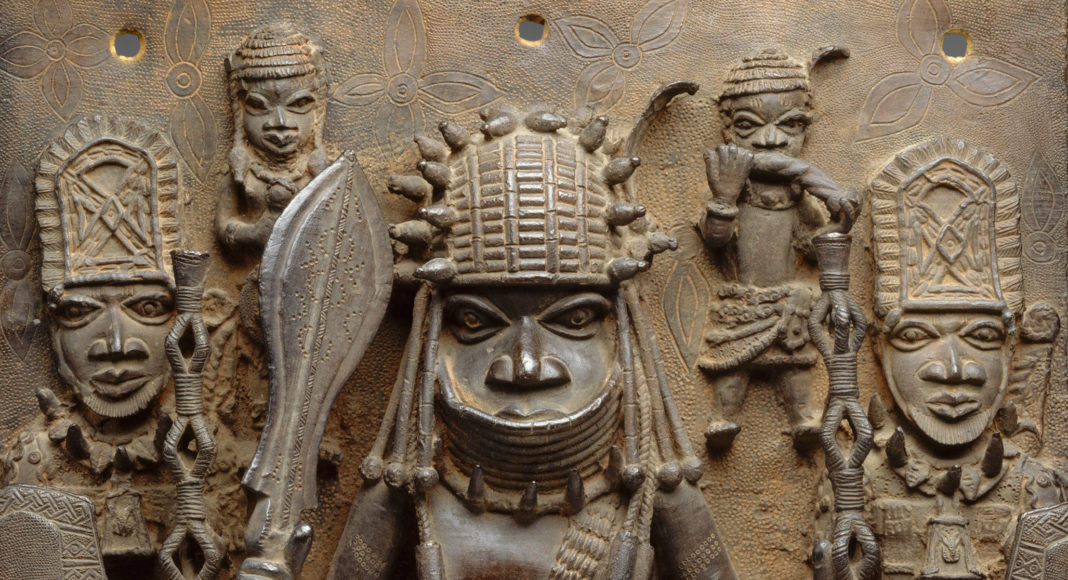By Nosmot Gbadamosi
Last August, artist Emeka Ogboh received a call. The world was in the thick of unwavering Black Lives Matter protests that toppled statues of slave traders and confederate generals. Activists were attempting to seize back looted African treasures. Authorities were arresting activists on a daily basis, and people were angry.
Yusuf Maitama Tuggar, the Nigerian Ambassador to Germany was at the other end of the telephone. Since taking up his post in 2017, he had actively petitioned for the return of the Benin Bronzes. He wrote a letter to chancellor Angela Merkel formally requesting their return. He wanted Ogboh in talks with the Staatliche Kunstsammlungen Dresden (SKD), whose museum of ethnology held some of those looted artifacts.
Aware that German lawmakers had twice ignored those restitution requests, Ogboh was equally upset. “I was clear from the start that I was here to facilitate things, rather than having roundtable talks and drinking tea,” Ogboh said.
Instead of tea, Ogboh launched a poster campaign commissioned by the museum showing images of Benin objects in Dresden’s Museum für Völkerkunde with the text “Missing in Benin.”
“The reparation dialogue to date has been ineffective,” he said. Ogboh’s posters on display throughout Dresden depict five of the Bronzes currently in the museum’s collection alongside details of the dimensions, provenance, and date the artifacts went missing from Benin. He said it was a call to action that would pull the debate out of museums and onto the streets with “a sense of impatience and necessity.”
The posters proved popular to the public, and Ogboh now intends to expand the project’s global audience by bringing it online.

In February 1897, the Benin Kingdom, now part of modern-day southern Nigeria, was ransacked and burned to the ground by British soldiers during a punitive expedition. The British killed thousands of the kingdom’s Edo people with maxim guns.
After being put on a sham trial, two of the king’s chiefs were shot by the British “and their bodies displayed hanging in the streets for 24 hours,” according to a New York Times report from 1897. Journalists at the time wrote that “the English soldiers went to Benin, killed a lot of naked savages.”
Soldiers stole ancestral artifacts in Benin’s royal palace and sold them to the highest bidder or handed them down to family members. The rest went to the British Museum for an exhibition later that year in its basement, where they have remained for 124 years. Estimates of the looting range from at least 3,000 artifacts to over 10,000.
“These objects were stolen and in such a violent way,” Ogboh told Sahelien.com. “Society must act as a whole to repatriate artifacts that are simply not theirs.”
A new project born out of the Benin Dialogue Group that’s being spearheaded by the Museum am Rothenbaum in Hamburg, Germany, could provide some clarity on how many Bronzes are held in museums.
The project is called Digital Benin, and it’s financed by the Ernst von Siemens art foundation with €1.2m. It aims to compile Western museums’ existing digital data on Benin’s artifacts and supplement this with expert oral knowledge and materials collected through interviews in Benin City and Lagos. “We want to tell it the way the Benin people tell their story,” said Godfrey Ekhator-Obogie, a research lead for Digital Benin who is based in Benin City.
“We are asking museums for the data in the way that they have stored them,” said Anne Luther, an expert in digital humanities who is part of the Digital Benin team. “From that we want to develop a Benin-centric view of reconnecting that information from the museums.”
Many of the objects seized from Benin are connected to historic events, sacred rites and ancestral ceremonies. “In Benin, before the punitive expedition, every household was a museum because every household has an ancestral altar,” Ekhator-Obogie explained.
“Pick the very popular ivory mask [Queen Mother Idia], we will be talking about how the Benin people engaged their neighbors the Igala in a war, how a woman was married to a king from a village in Benin and how this woman became the first warrior Queen mother of Benin,” Ekhator-Obogie added.

Digital Benin would bring in the cultural context and oral history missing from the material descriptions currently available about the masks held in the British Museum and the Metropolitan Museum of Art in New York.
The digitization project is also a useful tool for Nigerian students without any current access to the objects or archival materials. The team estimate that they will be dealing with data for probably between 3,000 and 5,000 objects scattered across museums worldwide. It will not account for the thousands that are held in private collections or households in Europe and the U.S.
The Edo Museum of West African Art, planned near the site of the former royal palace in Benin City, will be the main source of updates on the platform in the future. “We have two years and a finite amount of financial resources. However, on one hand, the project is not a substitute for restitution in any way,” Luther insisted. “Digital Benin is not saying, ‘alright give us these objects online and forget about it,’” added Ekhator-Obogie.
In Europe, decisions to return objects can only be made by politicians, and not museum directors. This is because of laws like the British Museum Act of 1963 that say collections belong to the state and cannot be given back unless they’re damaged or a duplicate. After gaining independence from Britain, Nigeria purchased back some Benin Bronzes put for sale by the British Museum, who claimed they were identical surpluses.
New legislation is needed to return items, such as a bill recently passed by the French parliament to return looted items to Senegal and the country of Benin, which was known as the Kingdom of Dahomey prior to French colonialism. Politicians elsewhere, especially in Britain, have largely ignored requests. British culture secretary Oliver Dowden objected to “the removal of statues or other similar objects.” He instead urged museums to “defend our culture and history from the noisy minority of activists constantly trying to do Britain down.”
In Germany, the head of the Prussian Cultural Foundation, which oversees the new Humboldt Forum which holds around 530 looted Benin objects, said in a statement to ArtNet that restitution could only take place “on the basis of a dialogue in which it is jointly considered which things should return, which should stay here.”

The Metropolitan Museum of Art said in a statement to Sahelien.com that the items in its collection “were given to the institution in the 1970s and 1990s by individuals who had acquired them on the art market.” Many of the Benin Bronzes held by the Met, like the Queen Idia mask, were gifts from the Rockefeller family.
“Virtually all artifacts created for the Court of Benin before the 20th century – numbering in the thousands – were removed by the British in 1897,” a spokesperson for the Met acknowledged, and said the museum was “actively considering how it might contribute to Digital Benin,” but did not mention restitution.
Artist and art historian Peju Layiwola believes, “Digital Benin gives us the opportunity of seeing and knowing what is available out there.” But she said the indisputable case for restitution is growing louder. Layiwola is a descendent of the Benin royal family and is one of a few female bronze casters in Nigeria. “People are looking back at history and seeing the unjust way in which Africa in particular was colonized,” she said.
Lagos was an independent town of the Benin Empire. It was the first to be attacked in 1851 by the British navy and annexed a decade later as a colony. Accounts of its bombardment and local death toll describe “a beach lined for nearly a mile with the bodies of men.”
“When we look at it in a broader context, we are looking at pilfering across the board, not just Benin alone,” said Layiwola.
She is cautious that the debate not end with Digital Benin. One idea “which has been pushed forward before is the idea of sending digital materials as some kind of repatriation or restitution,” she explained. “Nobody dances to digital masks. You have to have the physical masks,” she said.
Ogboh remains resolute. “The future museums will be the museums that are not crime scenes,” he said.

